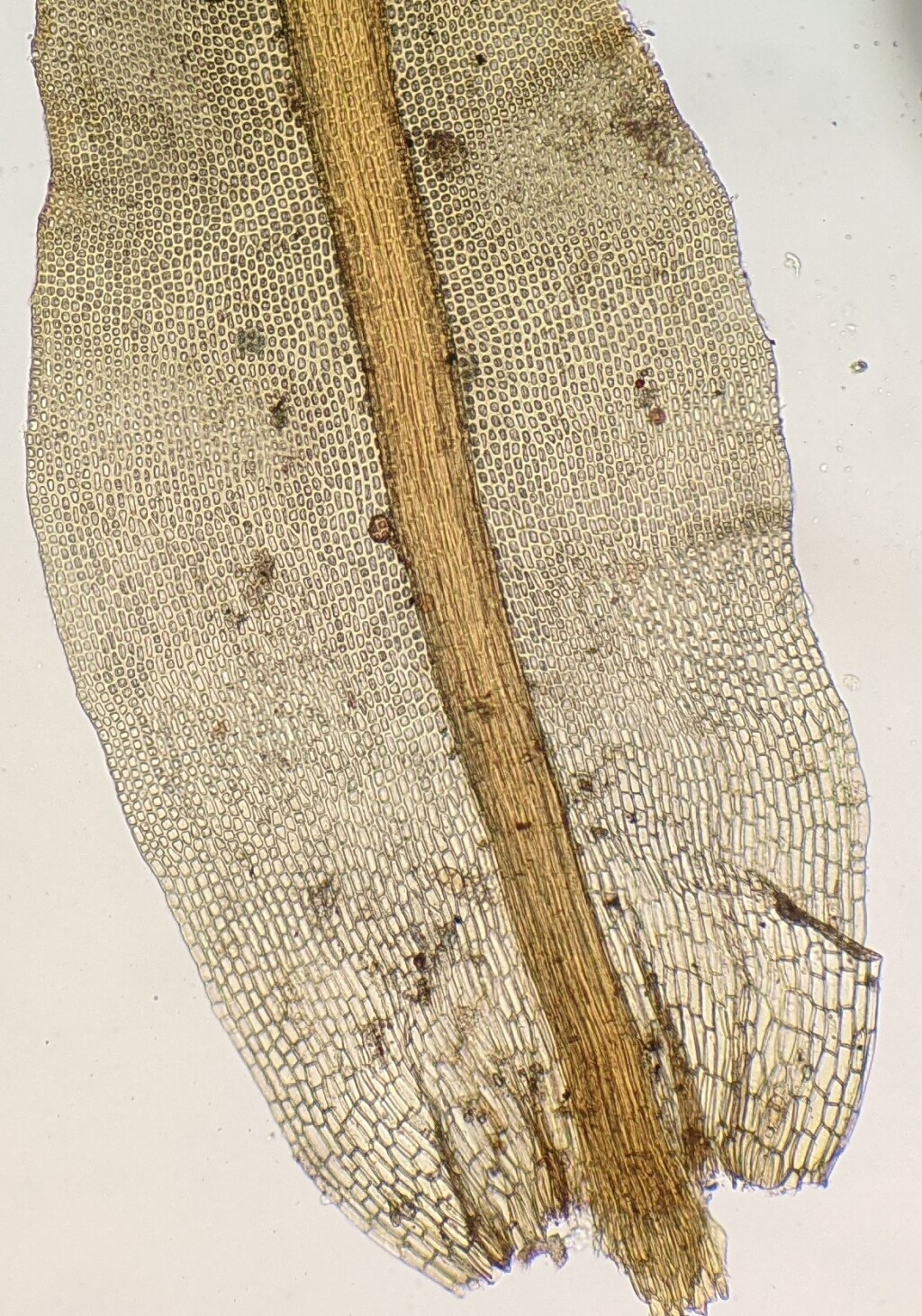Ptychomitrium
Autoicous. Asexual reproduction rarely by gemmae on branched axillary filaments in leaf axils (not in Victoria). Cushions or tufts on rocks or soil. Stems erect, simple or branched by forking, covered with rhizoids near base; central strand present, well-developed. Leaves ovate-lanceolate, lanceolate or linear-lanceolate, erect- to wide-spreading when moist, straight and appressed (not in Victoria) or contorted or crisped when dry; apex obtuse, acute or acuminate, without a hairpoint; costa subpercurrent or percurrent (not in Victoria); margin entire or serrate in apical half, plane or recurved, sometimes erect or involute at apex, without a border; laminal cells in quadrate to rectangular, longer and hyaline toward base, smooth, bistratose or tristratose at least at margin and in patches or rows in apical half or entirely unistratose (not in Victoria). Seta smooth. Capsules erect, symmetric, exserted, ovoid to oblong or cylindric, smooth or striate. Calyptra mitrate, usually plicate, without hairs but sometimes scabrous at apex, split at base into several lobes. Operculum rostrate from conic or flat base. Peristome a single series of 16 teeth, each entire (not in Victoria) or split into filaments almost to base.
Cosmopolitan, except Antarctica, with around 41 species (Cao et al. 2003); three species in Victoria.
 Spinning
SpinningCao, T.; Guo, S.; Yu, J. (2003). Preliminary studies on distribution pattern of the genus Pychomitrium (Musci) in the world. Journal of the Hattori Botanical Laboratory 93: 247–258.


